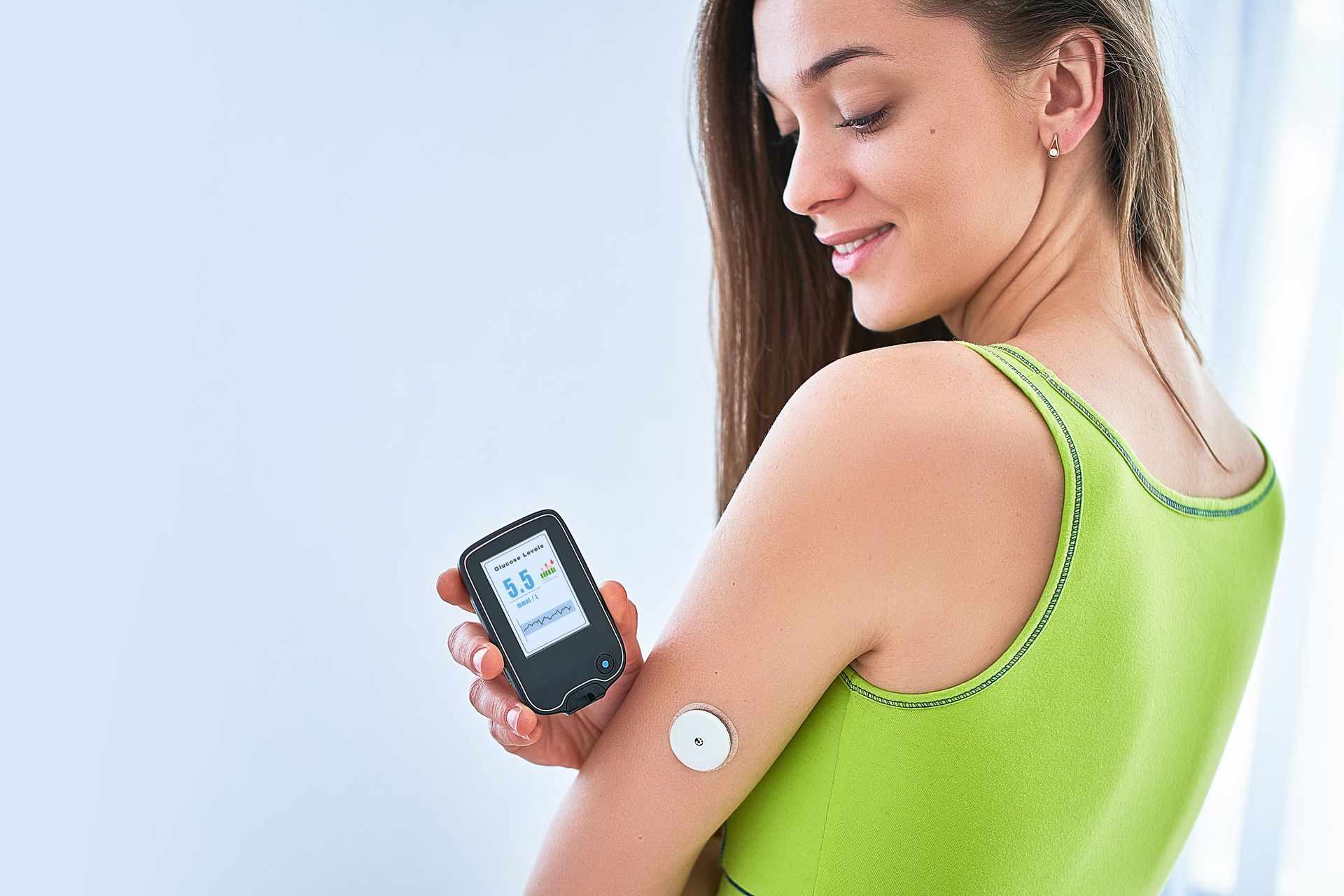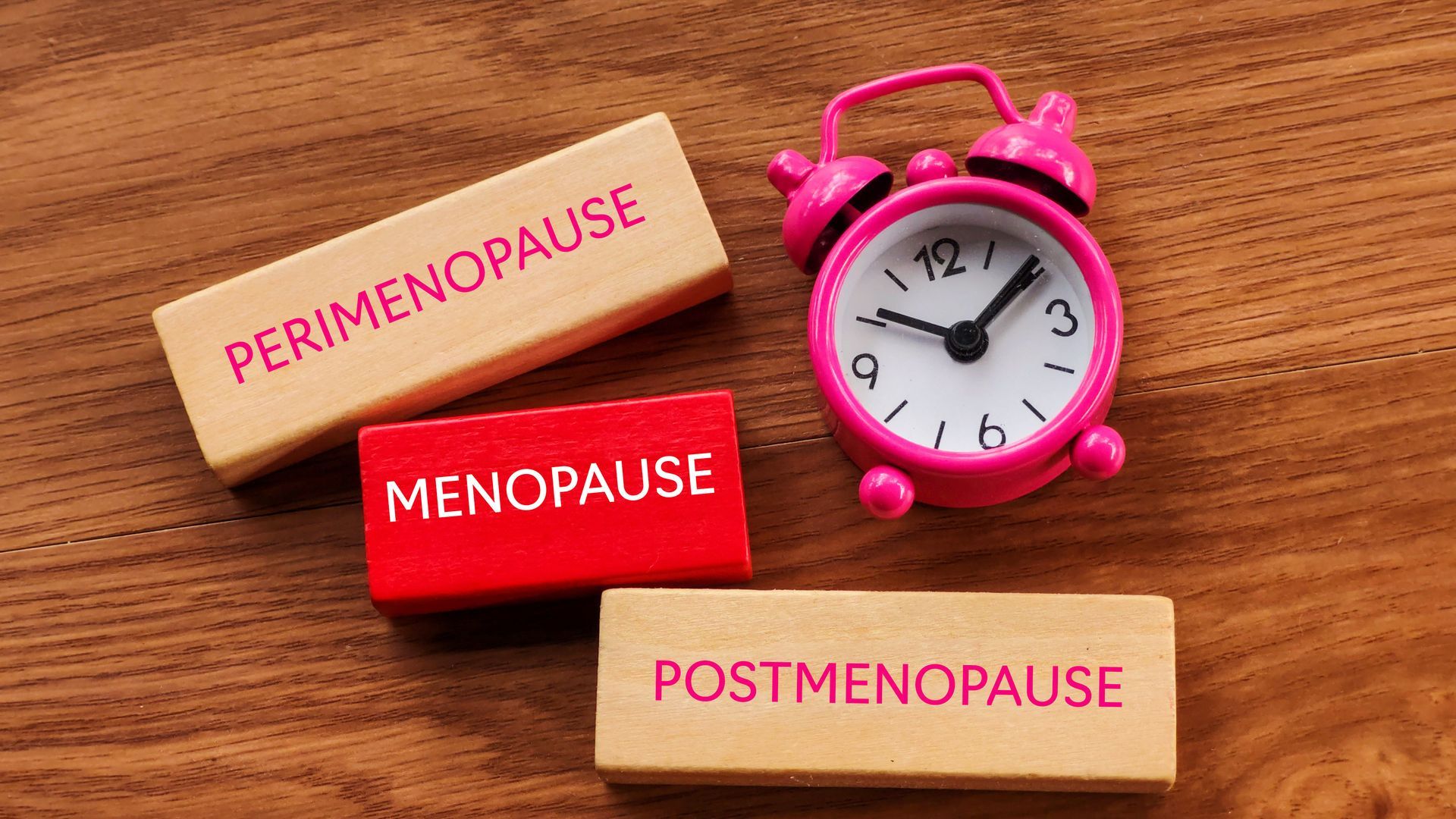Recent Posts
Diabetic Eye Disease 2021
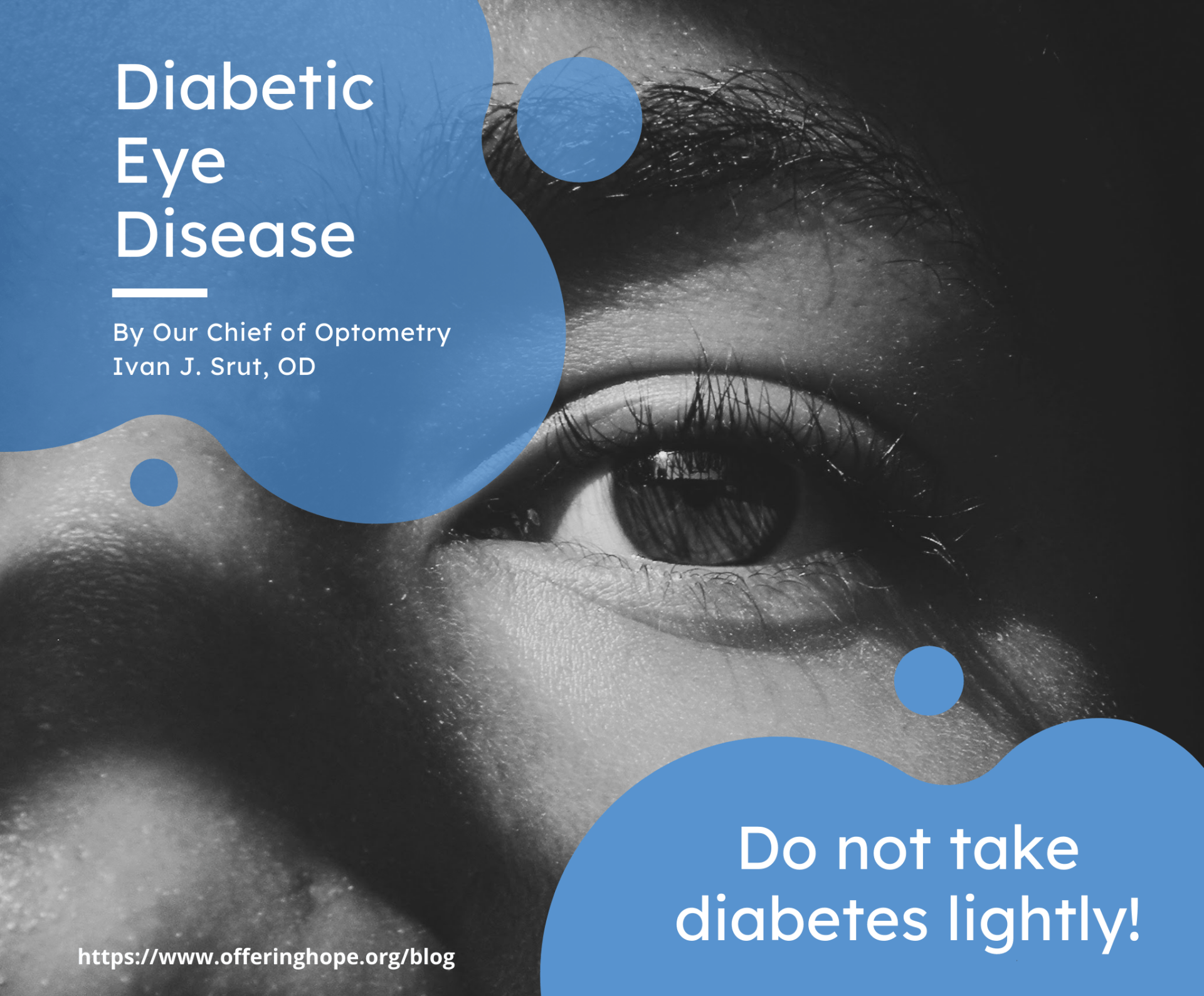
November is Diabetic Eye Disease Awareness Month, so let me discuss the 4 Eye Conditions that make up diabetic eye disease, and how they affect vision.
During my studies at UHCO(University of Houston College of Optometry) we were mainly concerned with diabetic retinopathy as it was, and still is, the most common reason for blindness in adults with diabetes. Since that time (when dinosaurs roamed the earth) we now find ourselves concerned with 4 different eye conditions that are either the result of having diabetes, are at increased risk for people with diabetes, or worsen for people with diabetes. These are diabetic retinopathy, diabetic macular edema, glaucoma, and cataracts.
Diabetic Retinopathy
Diabetes causes blood vessels in the back of the eye, the retina, to swell, weaken and leak blood into the back of the eye. There are also signs of ischemia, or lack of oxygen, to the eye so they cause cloud-like spots called cotton wool spots and the growth of new blood vessels into the retina which shouldn’t be there. Here is how a person with diabetic retinopathy sees compared to a normal person:
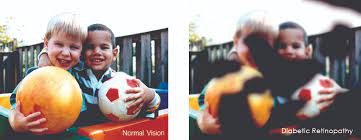
Diabetic Macular Edema(DME)
This is when there is swelling in the area of the retina where your fine and color vision come from, called the macula. Blood can also leak into this area greatly threatening a person’s vision, or at least causing blur or distortion of images in the central part of their vision. This is what a person with diabetic macular edema may see like:
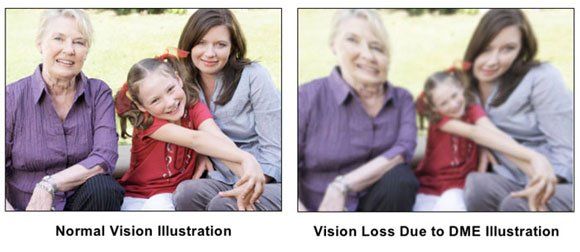
Glaucoma
Is a condition, typically caused by high pressure in the eye, which damages or kills optic nerve tissue. This causes loss of peripheral vision over time and possibly blindness. A person is at least double the risk of getting glaucoma if they have diabetes. Here is what a person with glaucoma may see like vs a normal person:
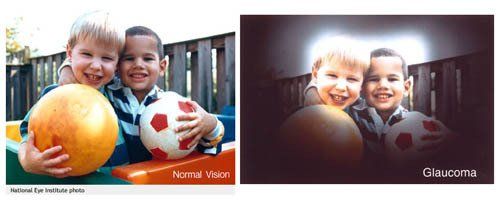
Cataracts
Last, but not least, there are cataracts that are an aging/discoloration of the natural lens of the eye. We will all get them if we live long enough, and they cause an overall blur of vision...like you are looking through a dirty window. This is what it may look like:
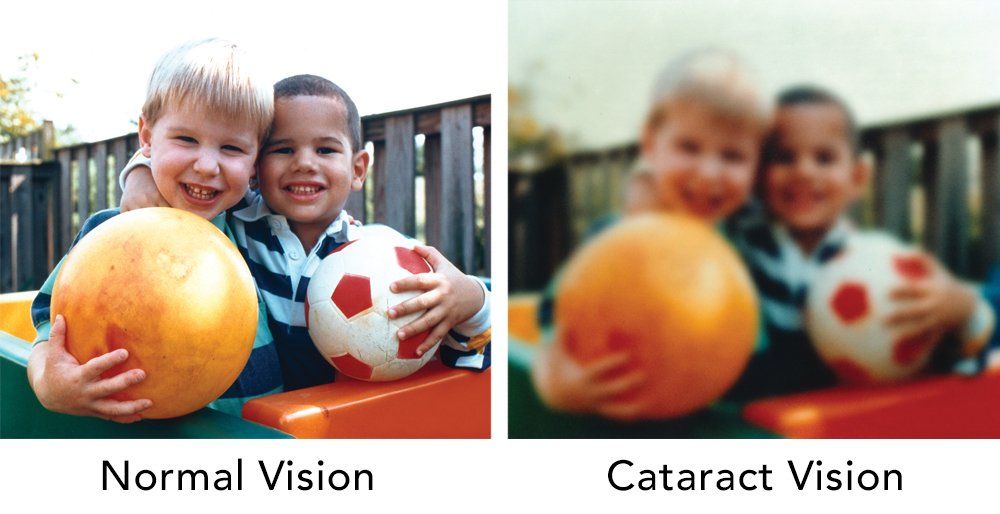
All 4 of these conditions are more likely to occur in people with diabetes. It is very important to have an eye exam at least once a year, with retina dilated(or a good retinal camera) so that the eye doctor can get a good view of the retina, possible cataracts and glaucoma. Do not take diabetes lightly! Diabetic eye disease is the leading cause of blindness in adults! Call us today to make your appointment!
Until next time...


